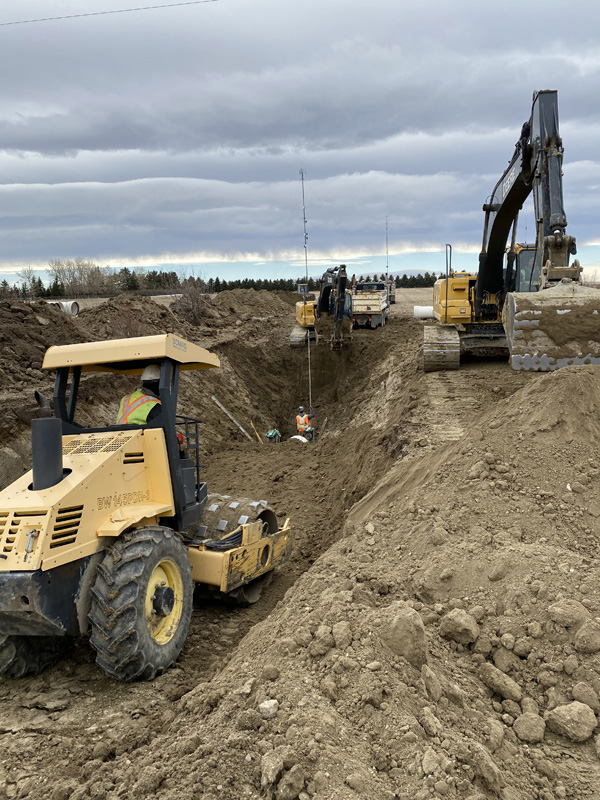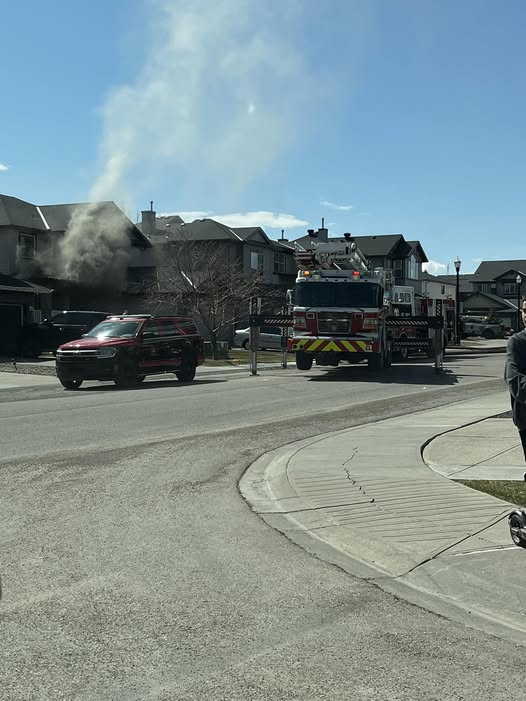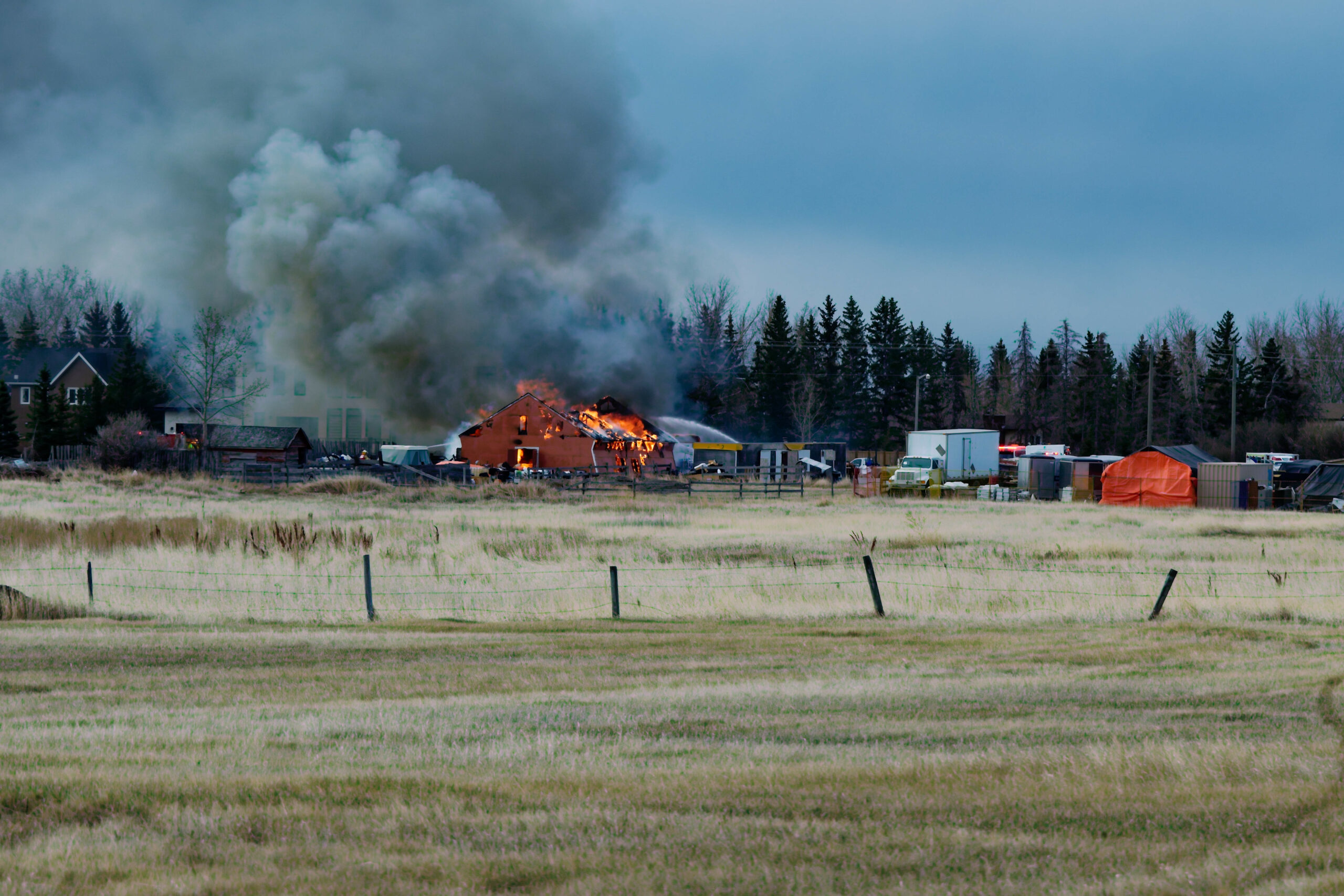Every dollar spent improving irrigation in Alberta brings improvement to the economy. This investment ensures stable, efficient water delivery, creates job opportunities, and provides a high rate of financial return for every dollar spent.
Thirteen Alberta irrigation districts provide water to end users. Water is diverted from rivers according to license agreements with the Government of Alberta and moves through a network of 8000 km of canals and pipelines.
Irrigation districts work together with the Government to ensure water is delivered efficiently. Upgrades to the systems are executed according to a plan developed by assessing current infrastructure and looking to future water needs.
In 1969, the Government of Alberta established the Irrigation Rehabilitation Program (IRP). In this cost sharing program, the Government provides 75% of the cost of capital projects to improve on infrastructure while the Districts provide the balance. Many Districts go beyond this, investing additional funds to accelerate the improvements.
Improvements include decreasing water seepage by lining open canals with impermeable liners, lowering erosion by stabilizing banks, increasing water capacity by enlarging canals, or eliminating water losses entirely by installing pipeline systems for water delivery. These projects carry a large price tag, but the returns on those investments are substantial.
For example, the Raymond Irrigation District’s (RID) 2019-2020 IRP construction project was to install approximately 8 km of PVC pipeline located north of the Town of Raymond. This pipeline will help ensure the efficiency and stability of water delivery to over 1900 irrigated acres on this system, as well as home yards, feedlots and a cemetery that rely on its water. This is part of a two-year project that will cost approximately $1.76 million in total.
“IRP funding last winter enabled us to hire three people for six months and maintain an additional three full-time staff who would be seasonal otherwise,” explained Gordon ZoBell, Manager of the RID, “If the IRP program did not exist, our staff in the winter would be 1.5 people with three people hired seasonally to assist with water delivery and maintenance. This would create a huge concern for a district our size, as it would be difficult to get the same people to return.”
A variety of local companies and firms also benefit from the demand for supplies, equipment and services needed for the projects. For example, IPEX Inc., an Edmonton-based company, manufactures the PVC pipe used by Alberta irrigation districts. The demand from rehabilitation projects, including those funded through IRP, increases the amount of pipe they produce.
“The RID alone receives over 20 semi-trailer loads of pipe each year,” said ZoBell.
The 2015 study, “Economic Value of Irrigation in Alberta”, commissioned by the Alberta Irrigation Districts Association (AIDA), shows that for every dollar invested in irrigation by the Government of Alberta, $3.00 in revenue is generated for the governments of Alberta and Canada combined.
The Western Irrigation District (WID) undertook construction this past winter on two IRP projects. One was to complete installation of an impermeable liner covered with gravel in a canal on their North Cluny system. The IRP invested approximately $3.67 million in this project, and it could generate $11 million in revenue for the governments.
This IRP investment also generates five full time equivalent jobs in the WID.
“These rehabilitation projects happen every year in part because of the commitment of the Government of Alberta to the IRP program,” said Margo Redelback, Executive Director of the AIDA. “There is consistent employment for quite a few people in Southern Alberta and around the province to supply the services and supplies needed. Irrigated agriculture and irrigation rehabilitation have been very consistent over the past 40 years.”
The economic benefits of investing in irrigation do not stop there.
“We’ve designed a system where more acres can be serviced and converted from dryland to irrigation,” explained WID’s General Manager, David McAllister. “The expanded productivity generated by irrigation increases the volume of value-added processing. More jobs are then created by the increased value-added processing.”
The 2015 Economic Study indicated that irrigated agriculture contributed $3.6 billion to the provincial GDP each year. Over $102 million of this came from maintenance and improvements to irrigation infrastructure.
“The Economic Value of Irrigation in Alberta shows that irrigation operations and maintenance combined with irrigation infrastructure rehabilitation create about 1400 full time equivalent positions,” said Redelback, adding that most are in Southern Alberta. “That’s significant when it’s consistent year after year. When we add in things like value added processing and equipment suppliers, irrigation creates about 56,000 FTE positions and $2.4 billion in labour income.”
The Government of Alberta’s Budget 2020 estimates a $34 million investment in IRP projects over the next three years.
The Alberta Irrigation Districts Association (AIDA) represents Alberta’s thirteen irrigation districts on matters of shared interest.









